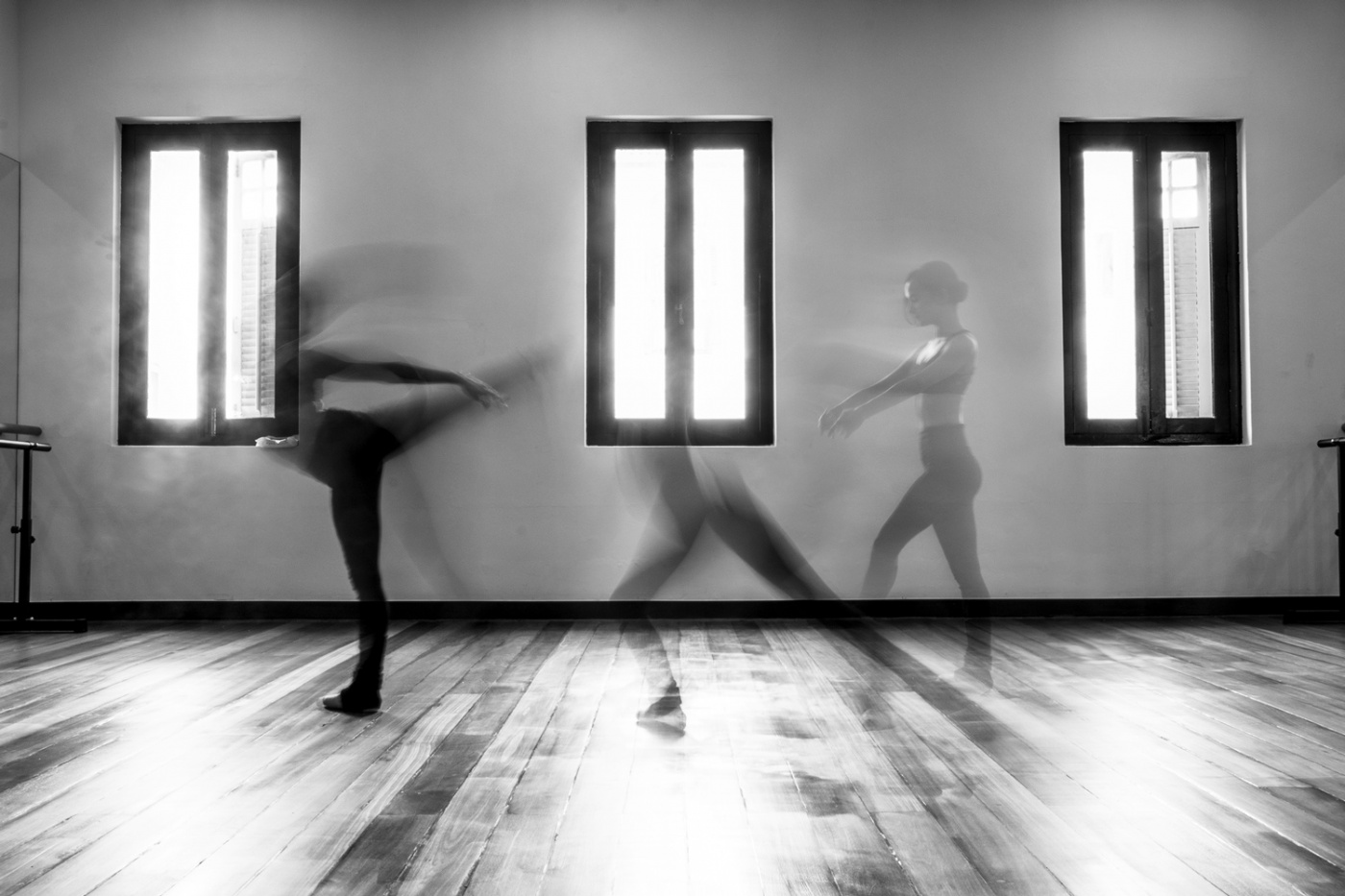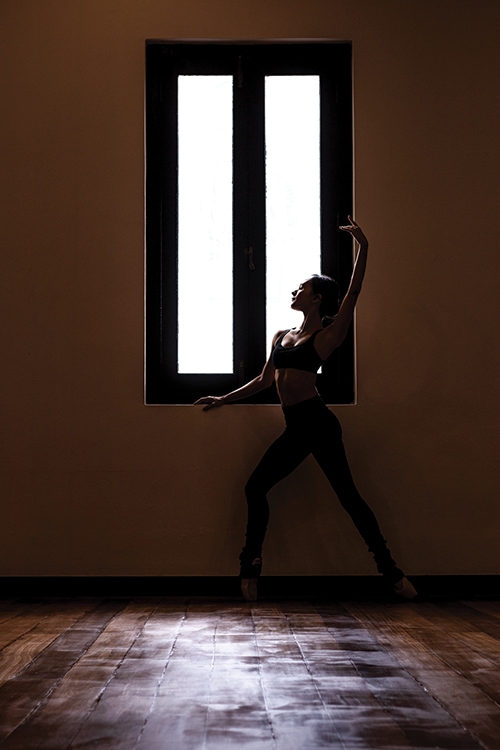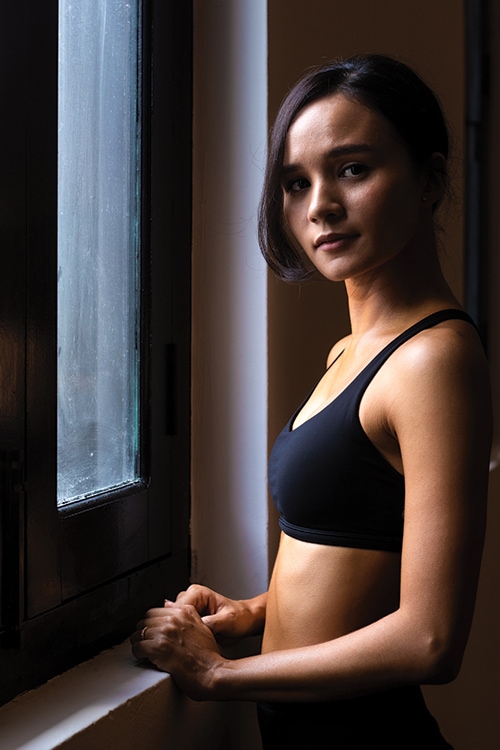Demystifying the Artistry of Ballet with Alison Carroll
There are no words spoken in ballet. No dialogue or conversation. It is a complex performance art with multiple layers to peel apart. Not everyone has the capacity to sit through four gruelling hours of Swan Lake—yet in its rudimentary form, the aesthetic appeal of ballet as an expressive form of dance can be enjoyed as such—rendering it a breathtaking spectacle.
In its essence, ballet is a medley of audio and visual entertainment. Stimulating musical compositions are paired masterfully with a crafted set, costume and lighting design. These key factors work in tandem with the immaculate technique and poise executed by the dancers, manifesting itself into an enthralling performance with ethereal-like quality.
Slender ballerinas leaping through the air effortlessly, wrapped in figure-hugging leotards accentuating their lithe figure. This is often the stereotypical image that comes to mind, yet for many girls, the allure has turned into an aspirational dream of performing in front of an audience. Deeply rooted in femininity, popular ballets such as Giselle are inspired by the ideals of Romanticism, which form a narrative where femininity is celebrated and feted.
Although ballet is seen as an art form spanning centuries, new forms of contemporary interpretations are surfacing. One such example is BalletBody—co-founded by two former professional Ballet dancers, Alison Carroll and Lisha Chin. Their ethos is to provide a programme to allow anybody, men or women, with or without prior experience to experience and learn the art of ballet. “Traditionally, ballet is associated with girls in pink tutus who stand on their toes and pirouette,” Alison says. “But we want to break away from that stereotype. A BalletBody class includes exercises from a classical ballet class, together with other fitness elements such as pilates.”
High Net Worth: When did you start doing ballet?
Alison Carroll: I started back in the UK when I was four. My mother enrolled me because I was shy and she wanted me to try something new, and I fell in love ever since. We moved to Singapore when I was 7 and after completing my secondary education, I went to New Zealand School of Dance to pursue dance studies. I was there for three years; we danced six days a week. Training would start at 8:30am and end around 6pm.
And you returned to Singapore upon graduation?
I came back and joined the Singapore Dance Theatre (SDT).
How long were you in SDT?
7 years.
Was it always your goal to join a theatre company and perform on stage?
I always wanted to become a ballerina. I’ve always said that, and I told my parents I wanted to make a career out of it—I got myself a scholarship from the National Arts Council and went to New Zealand.
Do you remember your first performance?
SDT always allowed kids to participate in their shows towards the end of the year. I was about 9 years old then. I think I was a mouse. That was my first time on stage and I got to work with the older dancers. It was an inspiring experience.
Did you struggle with stage fright at the beginning?
I had stage fright until my very last performance. I always get nervous before I go on stage.
How did you conquer that fear?
It’s not the fear of being on stage, it’s the pressure I put on myself, because anything can go wrong during a live performance. And I was always paranoid about that. But once I got on stage, the thought of having an audience scrutinise your every move just dissipates.
So it’s about getting into the zone and losing yourself while you perform?
Yeah. Although ballet is performance art, I have always danced for myself. Dancing makes me feel good, and that is why I continue to practise ballet.
What made you leave your professional career behind and go into teaching?
That was tough for me, but at the same time, the timing was right. I have already performed enough and was ready to leave. I left my professional career feeling satisfied and grateful.
Do you still miss performing on stage?
[pauses] I know how much hard work goes into a performance, and I don’t miss that side of it. I’m starting a new chapter now, almost like a second life, and not many people get to do that. I do miss moving and dancing every day for eight hours. It’s painful, but I’m thankful that I have managed to accomplish everything as a professional ballerina.
Will you ever return?
No, I’ve closed that chapter of my life already.
In ballet, a lot of strength and athleticism are required to execute a certain move, yet it needs to look effortless and graceful. Was that the biggest challenge for you?
It’s a very fine line between a mix of both. You have to be strong and you also have to take care of your body. If there’s anything I would go back and change about myself, it would be to take care of my body a bit more.
In what way?
Going for physiotherapy, establishing a body maintenance routine… basically taking care of myself to prevent injuries. We train in front of a huge mirror. You are constantly looking at yourself and striving for perfection. It’s mentally challenging because you face yourself all the time.
Have you suffered from any serious injuries before?
I have a bone spur on my ankle and it is really common for dancers. I also had keyhole surgery and was sidelined for about 4 months.
How do ballerinas stand on their toes?
We wear pointe shoes where the front is flat, that way you can actually stand and balance on it. It is reinforced by layers of paper and fabric and when the glue dries, it stiffens and becomes hard. It breaks down really quickly, so in a ballet company, we go through a pair almost every week. You have to sew everything and cater it specifically for your feet.
What differentiates a regular ballerina from a world-class ballerina?
That’s very hard to answer. I think it’s being able to dance and not just be technical. Not everybody has that quality in them. There are many people who can do a million turns and big leaps without the same level of artistry. That’s something that comes with maturity too. Some people just have that extra special quality in their dance, which is what sets a great performer apart.
Is there a certain degree of acting skills required in ballet?
You have to be able to tell a story. Depending on the performance, you have to love the person in front of you even if he is not your husband. Acting does play a part and that comes with experience.
Are there dancers who are so immersed in their role that they can’t pull themselves out of it?
I don’t think so. It’s nothing like Black Swan. You are not going to stab yourself and pull feathers out! Maybe there is someone out there who is like that. But it’s important to draw the line between your personal life and your career, and maintain a healthy work-life balance.
One interesting thing I’ve learnt about dancers is that they actually eat a lot. How do you maintain your physique?
We burn so much energy throughout the day! You have to make sure you are eating enough in order to get through four hours of Swan Lake. It’s also from the movements we do and the training regime we go through that gives us that physique. So yeah, we do eat a lot.
What is your diet like?
It’s really terrible! Some of the dancers do eat very healthily. They eat a lot, but with the right amount of carbohydrates and proteins. For me, I just eat anything. I eat McDonald’s whenever I want. I think I’m blessed with a high metabolism, so it’s a little different in my case [laughs]. I love local food as well. When I do feel very tired and my body is fatigued, I try to eat healthier, especially during performance week.
So no guilty pleasures?
I don’t really have any—I just eat whatever I feel like eating.
How has your lifestyle changed since you’ve left SDT and started your own studio?
The element of ballet is still there; I’m always talking about ballet and constantly doing ballet movements. Currently, my role involves sharing my experiences and knowledge, and making ballet accessible to everyone.
How did the idea of turning ballet into a fitness class come about?
There are a lot of fitness routines out there that utilise a few ballet steps, but it’s more of an aerobic workout. My partner and I felt that there wasn’t any workout in Singapore that infuses the essence of an actual ballet class. A ballet class is generally an hour and a half long, and for some adults, it’s a little intimidating. They might not be receptive to the idea of committing that much time into learning ballet from scratch. Some may just want a taste of it and to feel fit, like they’ve worked all of their muscles. We recognised a gap in the market and decided to give it a shot. So far, people seem to enjoy it. We have students who used to do ballet as a kid and never got the chance to continue training. They choose to come to us as our classes evoke memories of their childhood.
How long did it take from ideation to execution?
When we left SDT, I was teaching elsewhere before the idea came about. One day, my partner and I were just having lunch together and we thought about our future plans. Since we are both pilates certified instructors, we decided to start BalletBody together. We rented a studio and ran two classes a week to test the response. We started our Instagram page and from there, things really took off. We decided to move to another studio where we rented for longer hours. Eventually, we decided it would make more sense for us to move into our own place, so here we are!
Do you have male students coming to your classes?
Yes we do, do you want to join our classes? [laughs]
Is there a difference between teaching women and men?
It’s the same. Men are actually more open. Ballet is always associated with women: girls standing on their toes, dressed in pink and wearing tutus. We want to break away from that stereotype.
How do you conduct your classes? And how do you integrate a beginner into the class?
We have a few different classes: basic, classic and stretch. If you are a beginner, I would suggest attending the basic class, where we break down the simple positions of ballet and still allow you to have a good workout. The structure of our classes is the same as a formal ballet class, but the content is condensed. We incorporate pilates into our classes as well, so our students get to work on their core. We sell the idea of training like a dancer, where students get a taste what it’s like to train as a professional dancer. As professionals, we use pilates very often to warm up, prevent injuries and strengthen our core—therefore, we felt that it was an important component to have.
What is the biggest struggle of running your own business?
I’m learning something new every day. I’m not trained to run a business as I started out being a dancer. I’m learning a lot and I enjoy the process, so I wouldn’t call it a struggle. There are definitely problems that you will face along the way, but I’m just taking it day by day.
How did the business grow?
Our social media platform is effective. People recognise the novelty of our classes and the niche service that we provide. Nobody else is providing the same classes locally, taught by two professional dancers. People are intrigued and want to try something new.
What has been the biggest learning lesson for you now that you’re an entrepreneur?
It has brought out a different side of me. Meeting new people all the time is something very new, because my previous job revolved around the same people every day. Another thing that is different is how my brain is constantly thinking. My previous life in a ballet company was more structured; I’m a creature of habit, and now every day is different. It is a huge challenge for me to juggle multiple aspects of a business, but I do enjoy it. It keeps me on my toes.
How long has BalletBody been running?
We started as a partnership back in March 2018.
That’s impressive, barely a year in and now you have your own studio.
It’s been so scary! We didn’t plan and that’s fine in my opinion. Conventional wisdom dictates that you should always plan ahead, but we didn’t expect it to gain traction. We just wanted to test the waters and see if people actually liked it. I guess they do. 🙂
[Read More: No Body is Perfect: 5 Female Role Models Open Up About Their Struggles with Body Image]





